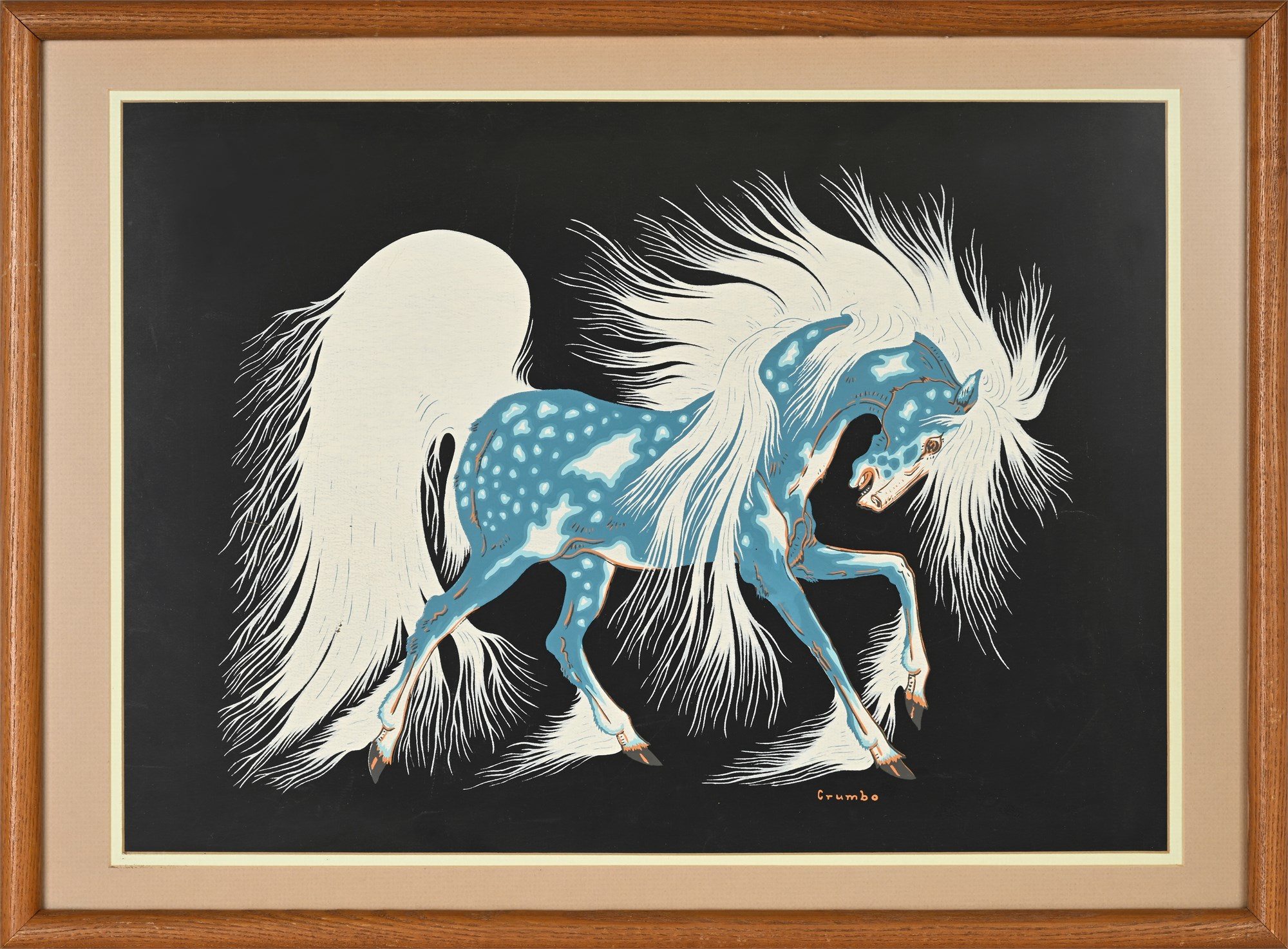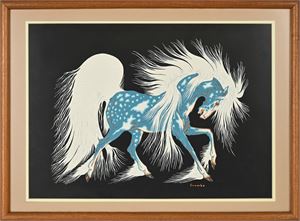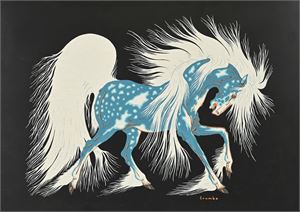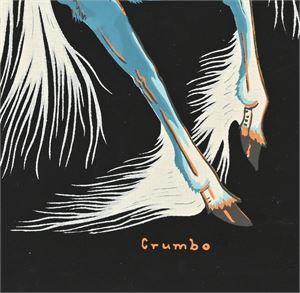Woody Crumbo Serigraph “Spirit Horse” — Original Screenprint (c. 1946–1952) View Watchlist >
Seller Accepts Credit Cards
Payment and pickup instructions will be available on your invoice (under "My Account") at the conclusion of this auction.
Lot # H707
System ID # 23989924
Start Date
End Date
11 Watching
Woody Crumbo Serigraph “Spirit Horse” — Original Screenprint (c. 1946–1952)
A powerful serigraph by Woody Crumbo (1912–1989), titled Spirit Horse, created circa 1946–1952. This iconic composition features a dynamic turquoise horse with flowing white mane and tail set against a deep black background. The animal’s form is stylized with Crumbo’s characteristic rhythmic linework, capturing both vitality and spiritual energy. The artist’s name “Crumbo” is printed in the screen at the lower right.
The horse was a recurring symbol in Crumbo’s work, representing strength, freedom, and spiritual connection. Through his mastery of silkscreen, he layered luminous tones of turquoise, ivory, and ochre to achieve striking contrast and motion. Spirit Horse remains one of Crumbo’s most admired subjects, collected by enthusiasts of Native American and modernist art alike.
Condition:
Good overall condition. Colors remain vibrant and bold, with no fading noted. Print is presented matted and framed behind glass; frame shows only minor surface wear consistent with age.
Dimensions:
Overall (frame): 17 x 23 inches
Visible image: 13½ x 18½ inches
Artist Biography: Woody Crumbo (1912–1989)
Woodrow Wilson “Woody” Crumbo was a Potawatomi artist, dancer, and cultural ambassador whose career spanned painting, printmaking, music, and museum curation. Raised among Potawatomi, Creek, and Sioux families, he studied under Oscar Jacobson at the University of Oklahoma before directing the art program at Bacone College and later serving as curator at the Gilcrease Museum and the El Paso Museum of Art.
Crumbo was among the first Native American artists to embrace silkscreen printing, producing bold, stylized images that carried Native traditions into modern contexts. His works — often depicting wildlife, dancers, and ceremonial symbolism — are represented in major institutions including the Smithsonian Institution, Metropolitan Museum of Art, and Gilcrease Museum. Spirit Horse, created in the mid-20th century (c. 1946–1952), exemplifies his fusion of Native symbolism with modernist design and remains one of his most celebrated and collected works.




